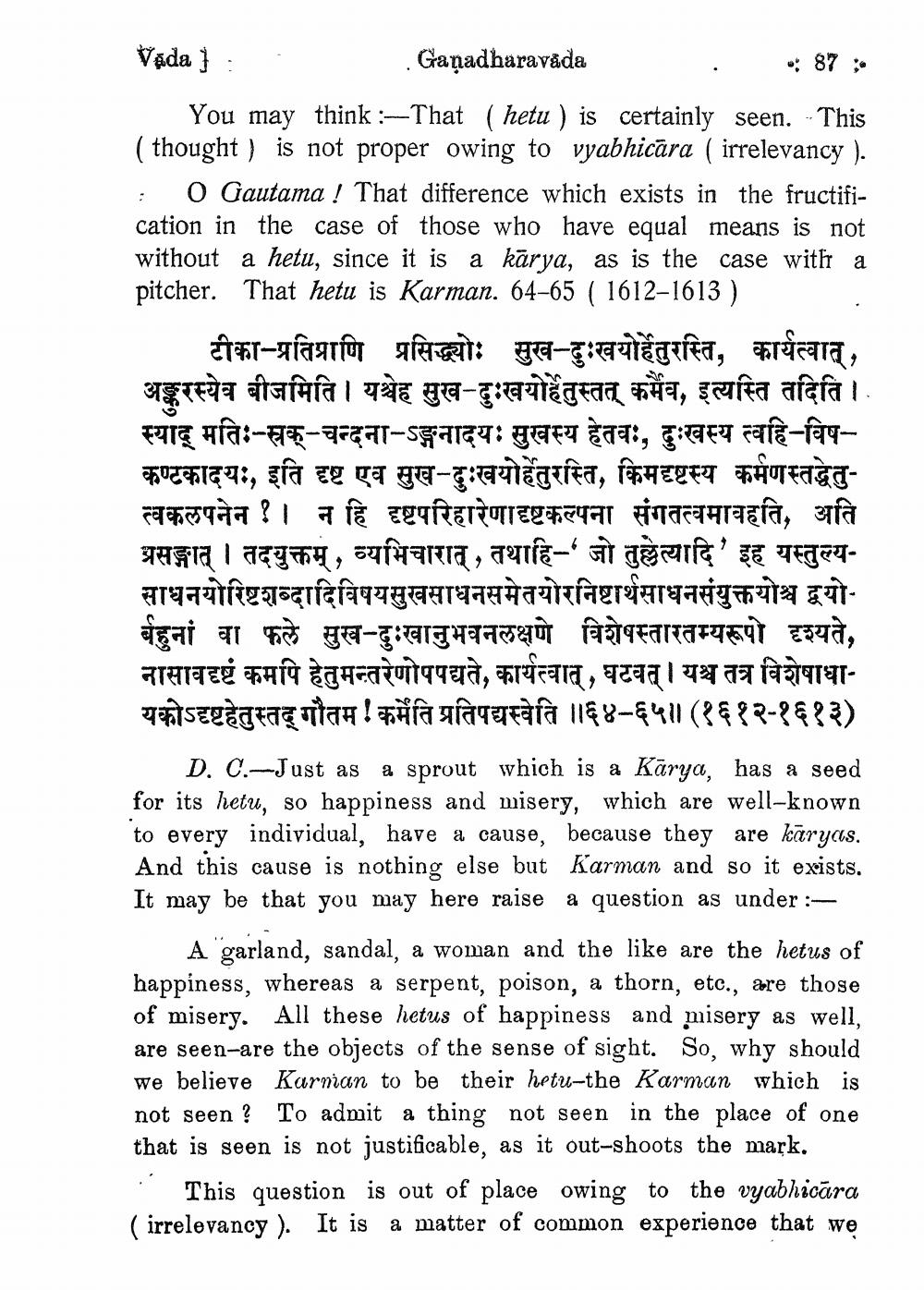________________
Vada J 4:
Gaṇadharavada
•: 87 :.
You may think : - That ( hetu ) is certainly seen. This ( thought ) is not proper owing to vyabhicāra ( irrelevancy ).
O Gautama! That difference which exists in the fructification in the case of those who have equal means is not without a hetu, since it is a karya, as is the case with a pitcher. That hetu is Karman. 64-65 ( 1612-1613 )
3
टीका - प्रतिप्राणि प्रसिद्ध्योः सुख-दुःखयोर्हेतुरस्ति, कार्यत्वात्, अङ्करस्येव वीजमिति । यह सुख - दुःखयोर्हेतुस्तत् कर्मैव इत्यस्ति तदिति । स्याद् मतिः- स्रक् - चन्दना - ऽङ्गनादयः सुखस्य हेतवः, दुःखस्य त्वहि - विषकण्टकादयः, इति दृष्ट एव सुख-दुःखयोर्हेतुरस्ति, किमदृष्टस्य कर्मणस्तद्धेतुत्वकलपनेन ? । न हि दृष्टपरिहारेणादृष्टकल्पना संगतत्वमावहति, अति प्रसङ्गात् । तदयुक्तम्, व्यभिचारात्, तथाहि - ' जो तुल्लेत्यादि ' इह यस्तुल्यसाधनयोरिष्टशब्दादिविषयसुखसाधनसमेतयोरनिष्टार्थसाधनसंयुक्तयोश्च द्वयोबहूनां वा फले सुख - दुःखानुभवनलक्षणे विशेषस्तारतम्यरूपो दृश्यते, नासावदृष्टं कमपि हेतुमन्तरेणोपपद्यते, कार्यत्वात्, घटवत् । यश्च तत्र विशेषाधातद् गौतम ! कर्मेति प्रतिपद्यस्वेति ||६४-६५॥ (१६१२-१६१३)
D. C.-Just as a sprout which is a Karya, has a seed for its hetu, so happiness and misery, which are well-known to every individual, have a cause, because they are kāryas. And this cause is nothing else but Karman and so it exists. It may be that you may here raise a question as under :
A garland, sandal, a woman and the like are the hetus of happiness, whereas a serpent, poison, a thorn, etc., are those of misery. All these hetus of happiness and misery as well, are seen-are the objects of the sense of sight. So, why should we believe Karman to be their hetu-the Karman which is not seen? To admit a thing not seen in the place of one that is seen is not justificable, as it out-shoots the mark.
This question is out of place owing to the vyabhicara (irrelevancy). It is a matter of common experience that we




